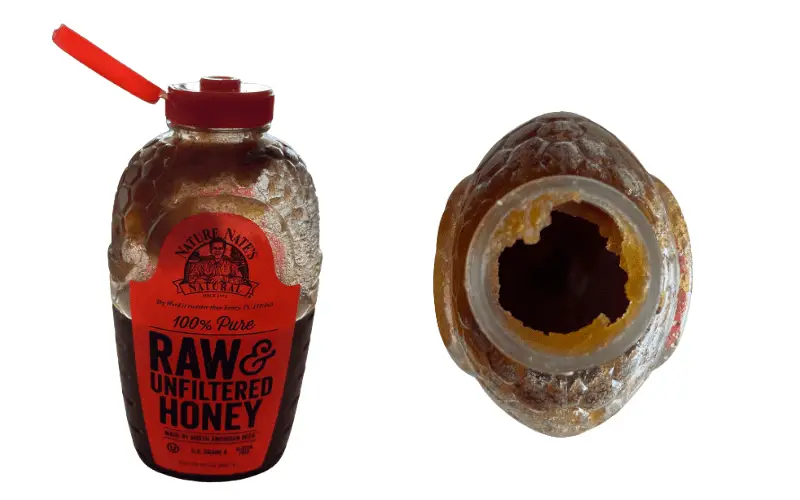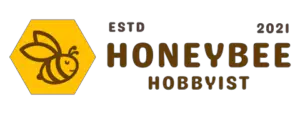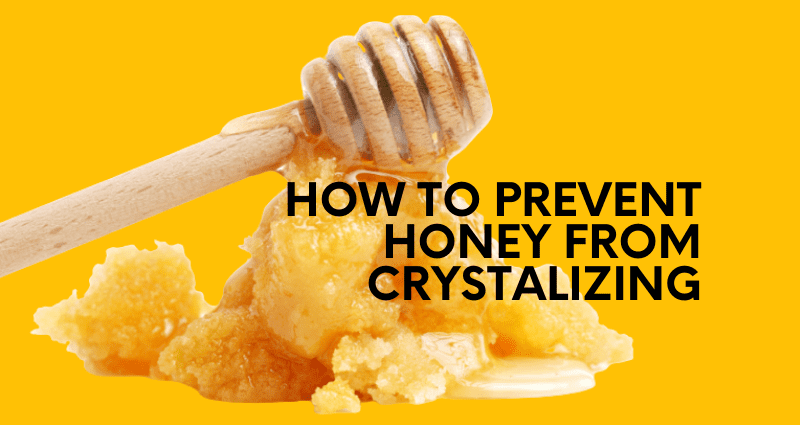2 Steps To Prevent Honey Crystallization
1. Store honey in a room temperature area & out of direct sunlight. 2. Store in glass jars, rather than plastic containers.
That’s it. No complicated preparation or upkeep is necessary for honey you’ve purchased from the store. The warm temperature will keep the honey liquid while the glass jar will prevent more are from reaching the honey. These basic steps will ensure you have liquid honey for months to come.
Now, there are also two commercial processes that can help prevent honey from crystallizing. It’s likely that the honey you buy off the shelf has already gone through these processes.
- Pasteurization – Honey is heated before packaging to ensure the honey is bottled at the same temperature and prevent contamination. If you harvest your own honey, you may want to consider this process before bottling and selling.
- Microfiltration – Unfiltered honey often has foreign particles and large sugar crystals that can help honey crystalize easier. These “large” crystals and particles are often naked to the human eye, so it’s wise to microfilter your honey before bottling.

Why Does Honey Crystallize?
The honey crystallization process is a common natural phenomenon. So, don’t fret if you find that store-bought honey is no longer in liquid form.
Raw honey is a supersaturated solution of sugar– it contains more sugar than water content. For this reason, sugar molecules precipitate out of the solution, and sugar crystals form.
Also, honey crystallizes because glucose, a sugar found in honey, is more soluble than fructose (another sugar present in honey).
Glucose molecules attract the water molecules and are left behind when the water evaporates—the glucose clumps together, forming crystals.
For more info on what honey is made of and the nutritional benefits, click here.
Different Types of Honey Crystallizes At Different Rates
Varying ratios of glucose & fructose will have a large effect on how fast your honey crystallizes.
The more the glucose, the faster it will crystalize.
More fructose and your honey will remain in its liquid state, maintaining its shelf life for months or even years.
Now, you might be asking yourself, how does a beekeeper help their honeybees produce honey that’s higher in fructose?
Well, it can be very difficult. Restricting a honeybee colony’s nectar sources is close to impossible.
We know that many trees like acacia, tupelo, avocado, and sage, have nectar that is high in fructose. And we know that many weeds, annuals, and shrubs tend to have nectar high in glucose.
So, many beekeepers will move their hives closer to nectar sources they know are higher in fructose. Or they may even plant high fructose-yielding trees around their hives. This way, they can attempt to control the types of honey their bees produce.
How to Decrystallize Honey
You may open your pantry to find your jar of honey has hardened. Or perhaps just a portion of the honey has hardened like the images below.

Don’t fret though! Crystallized honey is natural and doesn’t harm the honey. It’s also easy to fix.
To recrystallize, simply remove the lid from the jar of honey, place it in a water bath of warm water, and heat it over low heat until the crystals dissolve.
If your honey is in a plastic bottle, do not use hot or boiling water, or simply transfer the honey to a glass jar before heating.
Do not heat over 110° Degrees Fahrenheit.
It can take quite some time for all of the crystals to dissolve.
NOTE: Heating your honey may diminish the beneficial enzymes, change the flavor profile, or even turn the honey toxic. Be cautious and don’t overheat it.
Consider Creaming Your Honey
Creamed honey is a delicious way to enjoy your honey and you may want to consider creaming your honey if you find a jar or two that has crystallized.
Click here to learn more about creamed honey and how to make it.

